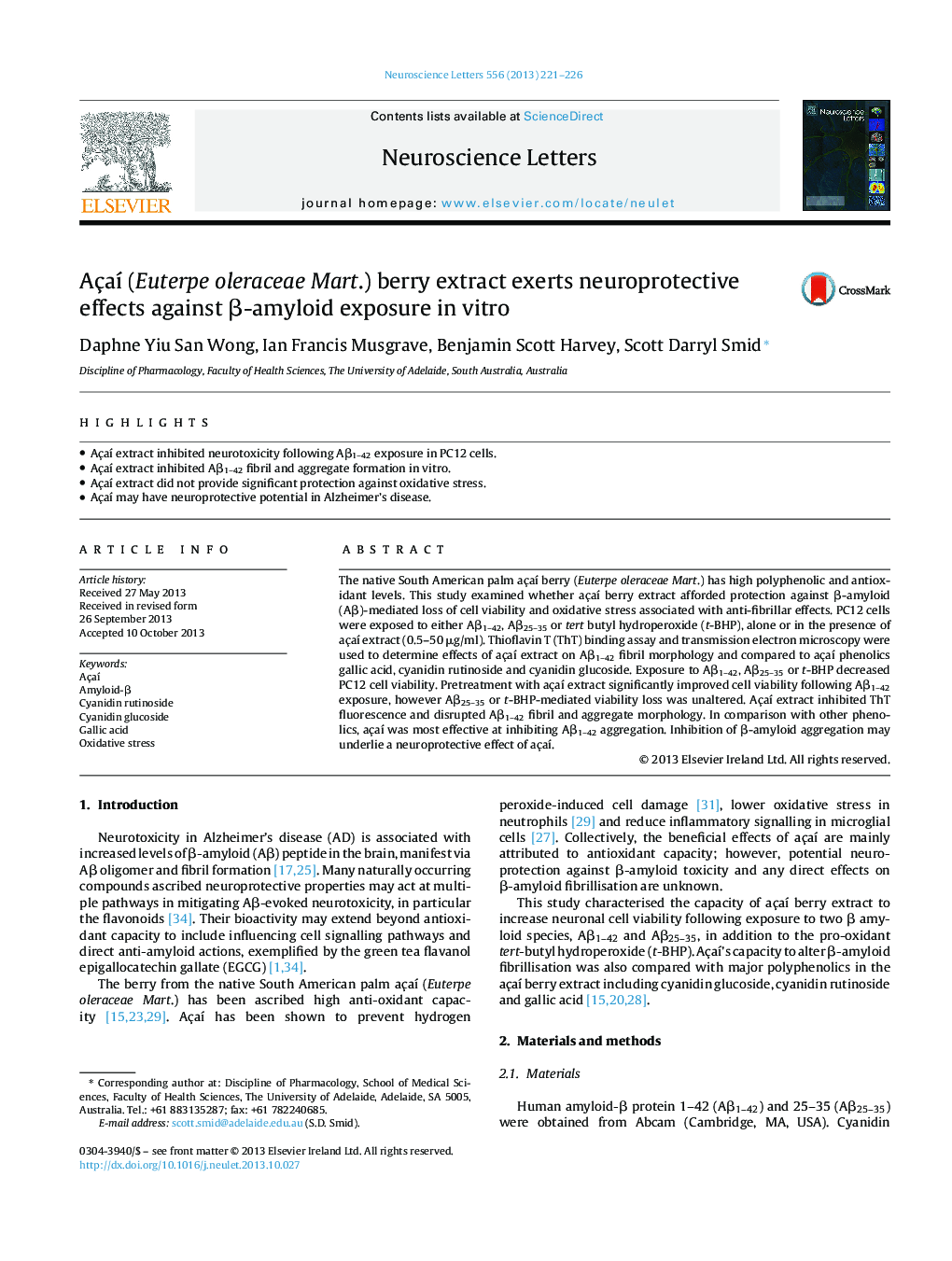| Article ID | Journal | Published Year | Pages | File Type |
|---|---|---|---|---|
| 6282609 | Neuroscience Letters | 2013 | 6 Pages |
â¢Açaà extract inhibited neurotoxicity following Aβ1-42 exposure in PC12 cells.â¢Açaà extract inhibited Aβ1-42 fibril and aggregate formation in vitro.â¢Açaà extract did not provide significant protection against oxidative stress.â¢Açaà may have neuroprotective potential in Alzheimer's disease.
The native South American palm açaà berry (Euterpe oleraceae Mart.) has high polyphenolic and antioxidant levels. This study examined whether açaà berry extract afforded protection against β-amyloid (Aβ)-mediated loss of cell viability and oxidative stress associated with anti-fibrillar effects. PC12 cells were exposed to either Aβ1-42, Aβ25-35 or tert butyl hydroperoxide (t-BHP), alone or in the presence of açaà extract (0.5-50 μg/ml). Thioflavin T (ThT) binding assay and transmission electron microscopy were used to determine effects of açaà extract on Aβ1-42 fibril morphology and compared to açaà phenolics gallic acid, cyanidin rutinoside and cyanidin glucoside. Exposure to Aβ1-42, Aβ25-35 or t-BHP decreased PC12 cell viability. Pretreatment with açaà extract significantly improved cell viability following Aβ1-42 exposure, however Aβ25-35 or t-BHP-mediated viability loss was unaltered. Açaà extract inhibited ThT fluorescence and disrupted Aβ1-42 fibril and aggregate morphology. In comparison with other phenolics, açaà was most effective at inhibiting Aβ1-42 aggregation. Inhibition of β-amyloid aggregation may underlie a neuroprotective effect of açaÃ.
